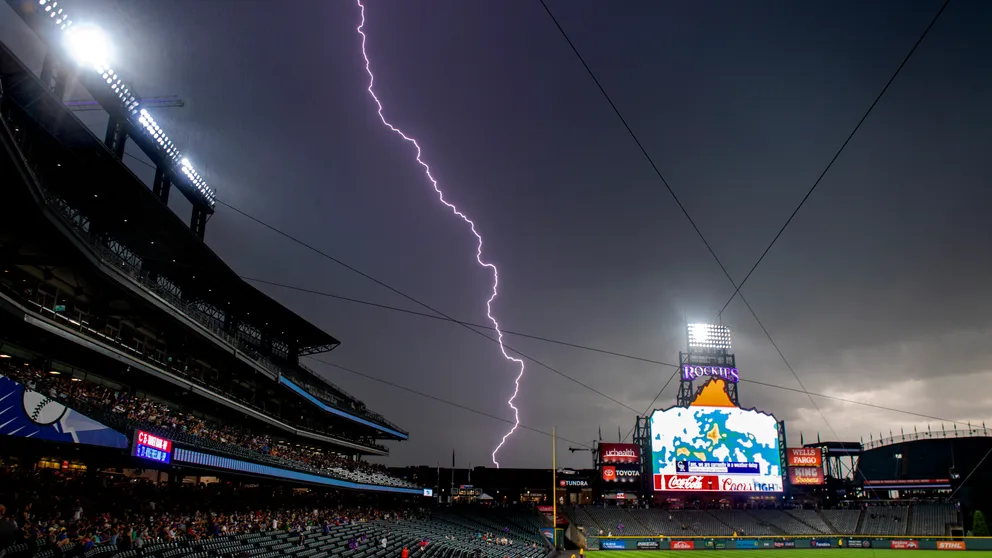What happens when someone is struck by lightning
The chances of being struck are slim, but given the severe physical and cognitive trauma lightning strikes cause, any odds are far too much.
When Lightning Strikes
Lightning can cause severe physical and cognitive trauma.
Your chances of being struck by lightning in your lifetime is about 1 in 16,550. While the odds are virtually zero (depending on certain behaviors and environmental conditions), it’s important to take note of what could happen to your body should the impossible strike.
Journeying from the sky to you
There are five ways lightning can strike humans:
The most deadly is called a "direct strike". As its name suggests, a direct strike happens when lightning travels down from the sky and hits a person — often in an open area — directly. This can produce the greatest amount of current through the body, compared to that of other lightning strikes.

Boats quickly head to port as lightning from a series of thunderstorms strikes over and beyond Boston, Massachusetts.
(MediaNews Group / Boston Herald / Getty Images)
Contrary to a direct strike, a "side flash" involves lightning first hitting a tall object and then having part of its current jump to a victim standing 1-2 feet away. An example of this is lightning striking a tree and then hitting a nearby victim who was seeking shelter from the elements under said tree.
The next type of lightning strike is a "ground current," and it causes the greatest number of deaths and injuries due to lightning. Ground current happens when lightning makes contact with an object on the ground and then travels outward through the surface of the ground.
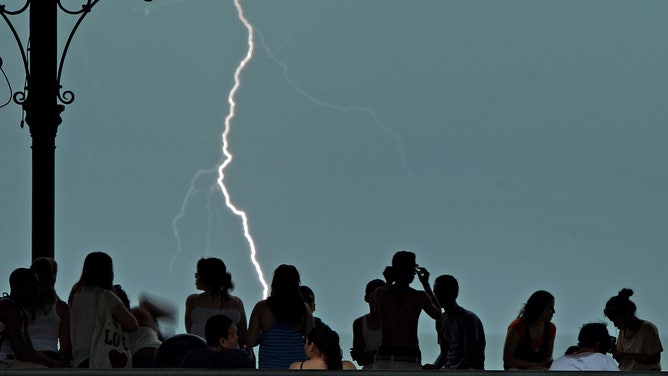
People take shelter as a lightning strikes in Revere Beach, Massachusetts.
(Mark Garfinkel / MediaNews Group / Boston Herald / Getty Images)
This ability to travel brings about the next type of lightning strike: "conduction." Conduction occurs when lightning hits a tall object, jumps to metal surface, and then travels along that surface. The metal provides an avenue through which the electricity can travel, endangering anyone in contact with the metal.
The least common lightning strikes are known as "streamers." Under normal circumstances, lightning usually only hits one object, or streamer. Multiple streamers usually happen when multiple objects on the ground become paths for a lightning bolt’s current. A person nearby can become one of those streamers.
No matter the type of lightning strike, the effects on a victim are severe and, in some cases, deadly.
Severe burns and shockwaves
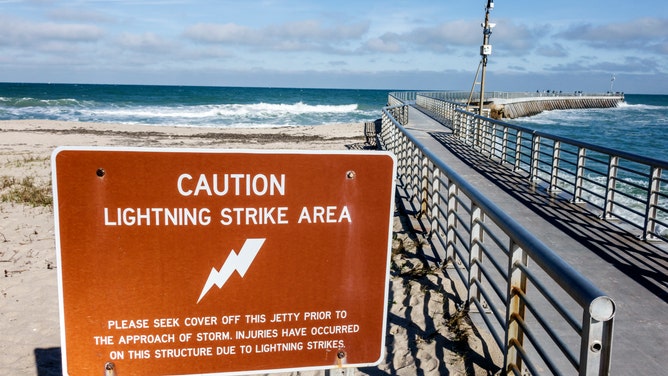
A caution lightning strike area sign next to the fishing pier at Sebastian Inlet State Park in Florida.
(Jeffrey Greenberg / Universal Images Group / Getty Images)
Lightning can harm the human body by way of its electrical properties and the extreme heat it causes.
While lightning technically has no temperature, its electrical current can heat the the air around it — and any object the current passes through — to be up to five times hotter than the surface of the sun.
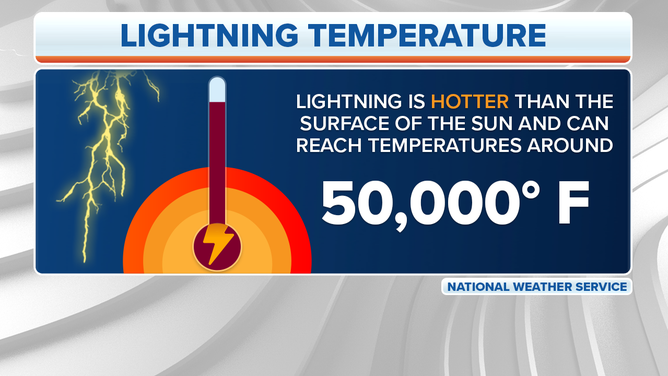
It can cause first- and second-degree burns called "linear flash burns," in which skin is scalded by the quick heating and vaporizing of sweat, rain or other moisture on the skin’s surface. Lightning may also cause circular "punctate burns," which occur when lightning’s electrical current, after having reached deep tissue, leaves the body. Punctate burns may be first-degree or, very rarely, third-degree burns.
LEARN: HOW LIGHTNING RODS WORK TO PROTECT HOMES AND BUILDINGS
Third-degree burns make up less than 5% of lightning-induced injuries. When they do occur, they often happen when skin comes into contact with an object that was heated up by the lightning strike. The object can be a synthetic or metallic object a person has come into contact with, which is often the case in conduction lightning strikes. The heated object then melts to the skin or directly burns it.
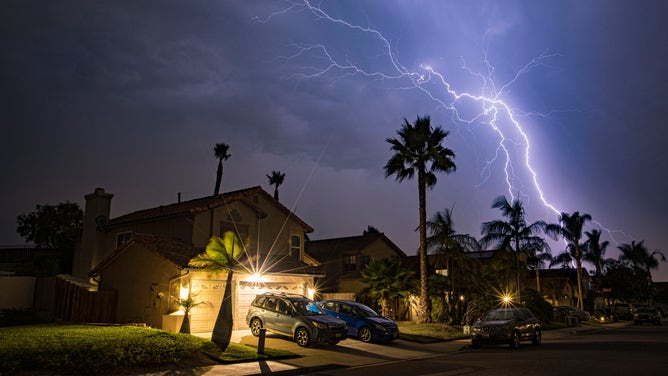
Lightning strikes over a home in Oceanside, California.
(Daniel Knighton / Getty Images)
Burns may also occur if the lightning sets a victim’s clothing on fire.
The temperature surrounding a lightning strike may also cause a debilitating shock wave. When the air around lightning rapidly heats up and then cools, it can create an implosive or explosive force capable of throwing the victim of a lightning strike. According to the National Institutes of Health, such a shock wave may cause severe physical trauma, resulting in injuries like internal bleeding, a concussion, a fractured skull and damage to the spine.
Jolt to the system

Lightning strikes near Kansas City, Missouri.
(John Sleezer/Kansas City Star / Tribune News Service / Getty Images)
Apart from lightning’s thermal properties, it can also damage the human body by way of its electrical properties.
The body is naturally awash in electricity, which is created when charges pass through cell membranes. It is this movement of electrical signals that allows information to move throughout your nervous system, the system that involves your brain and the neural pathways woven throughout your body (it basically tells your body what to do). When lightning strikes and reaches the nervous system, it can directly damage nerve cells, cause temporary paralysis and cause arteries and vessels in the brain to burst.
LEARN: DEBUNKING 7 MYTHS ABOUT LIGHTNING
Electricity from lightning can also cause extreme damage to the cardiovascular system, the system that includes the heart and blood vessels. Lightning’s electrical jolt may cause the heart to beat more quickly or more slowly than it should, compromising the amount of blood flowing through the body. Heart muscles may also be bruised and the aorta, the body’s largest artery, may be injured. Above all, a lightning strike can cause the heart to stop, which is often the case with direct lightning strikes.
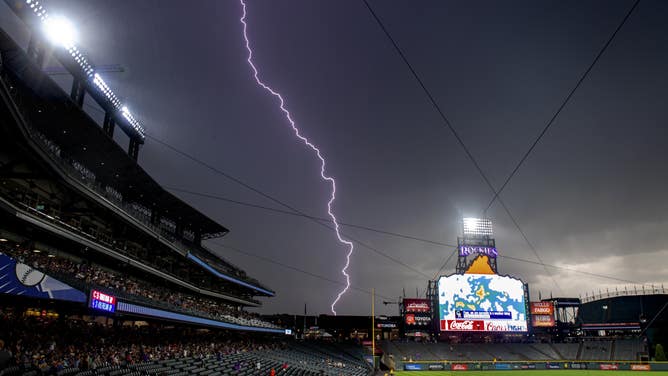
Lightning strikes behind Coors Field during a rain delay before a baseball game between the Cincinnati Reds and the Colorado Rockies on July 13, 2019 in Denver, Colorado.
(Julio Aguilar / Getty Images)
Because of lightning’s disruption of the nervous and cardiovascular systems, it has a ripple effect on the rest of the body, like the respiratory system. For example, a heart that fails to pump regularly is unable to pump the blood it receives from the lungs. This causes the blood to back up, increase pressure in the blood vessels and push blood into the lung’s air sacs — essentially, filling the lungs with fluid. Additionally, a lightning strike can cause the respiratory system to come to a halt.
Having such drastic effects on the body can cause lasting harm. Survivors of lightning strikes may suffer from movement disorders and lifelong neurological damage; cataracts, injuries to their optic nerves and other eye injuries; and damage to the inner ear that can lead to vertigo, tinnitus, paralysis of facial nerves and deafness. In fact, about 50-80% of victims of lightning strikes were found to have ruptured eardrums.

Lightning strikes well in the distance of a departing jet at Boston's Logan Airport.
(Mark Garfinkel / Boston Herald / MediaNews Group / Boston Herald / Getty Images)
Physical damage to the body, particularly its nervous system, leads to some long-term cognitive problems. According to the National Weather Service, some of them include: depression, inattentiveness or forgetfulness, slower reaction time, trouble processing new information and accessing old information, irritability from being unable to retrieve that information, self-isolation and personality changes.
Who is most at risk
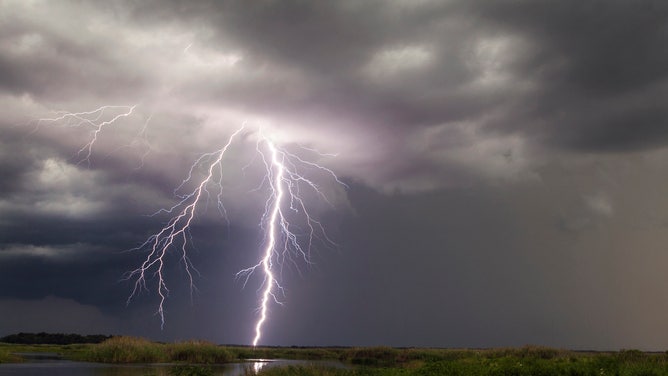
lightning from a summer thunderstorm pictured in Christmas, Florida. Florida is the lightning capital of the country.
(Jason Weingart / Future Publishing / Getty Images)
Given the short- and long-term effects a lightning strike can have on the human body, it’s critical to remain aware of the weather to decrease your chances of being struck. Plus, the statistic of 1 in 16,550 chances of being struck by lightning may actually increase for some individuals.
Men are five times more likely to be struck by lightning than women, accounting for about 85% of lightning fatalities. People who work outdoors also have greater chances of being struck, with over a third of lightning-related deaths happening on farms.
Also, individuals living in the southeastern U.S. are most at risk, with Florida having over 2,000 lightning-related injuries in 50 years, making it the country’s "lightning capital."
But no matter who you are or where you live and work, be sure to consider these lightning safety tips to help keep yourself and your loved ones out of harm’s way.
